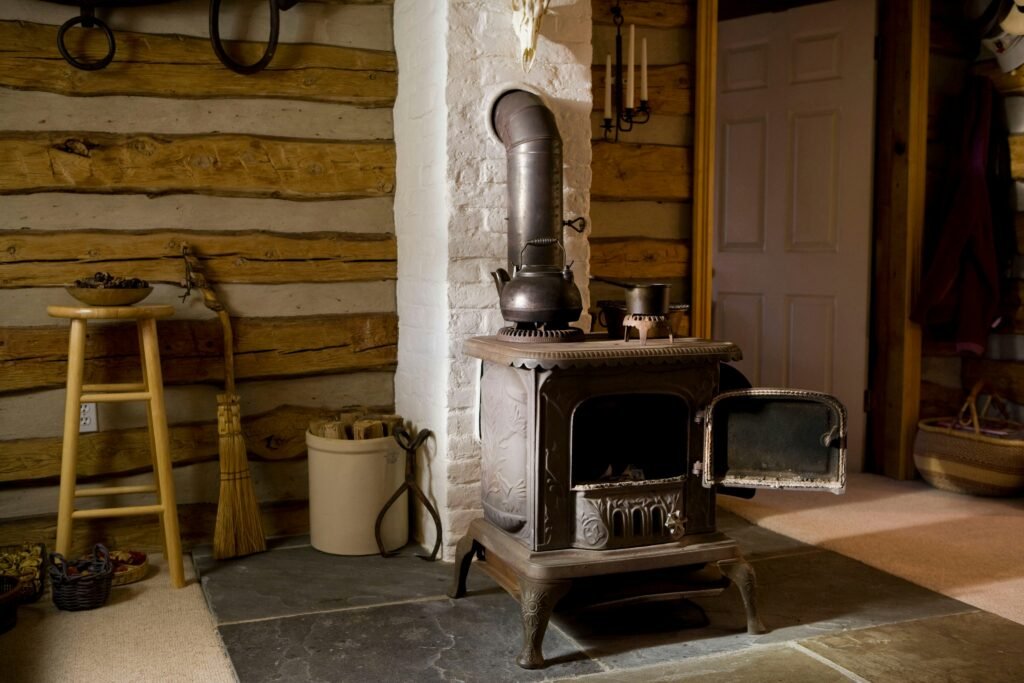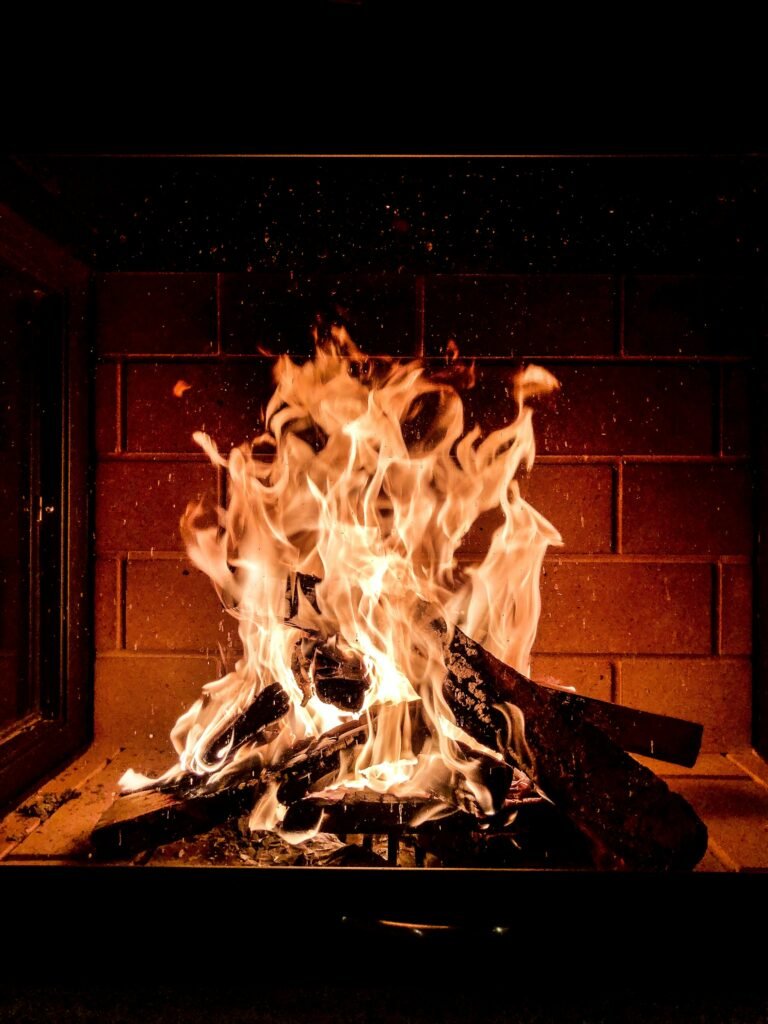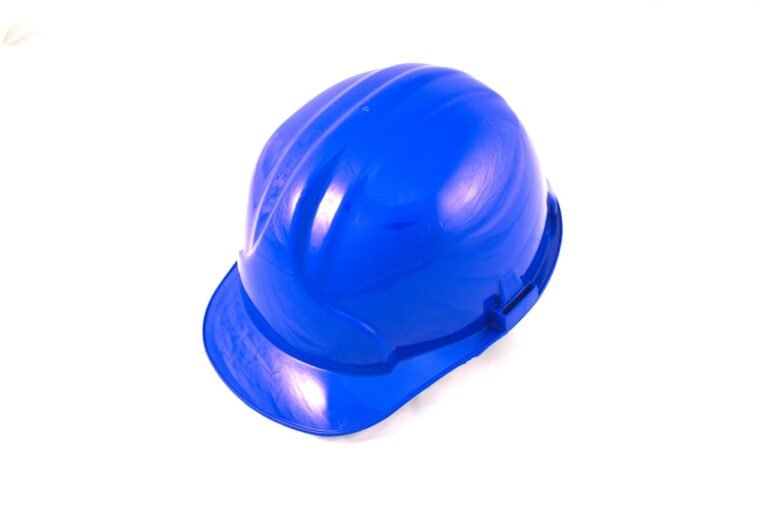In this article, you will learn about the importance of proactive fireplace safety measures and how they can help protect your home. Discover practical tips and advice on how to ensure safe flames and create a happy environment for you and your loved ones. From understanding the potential risks associated with fireplaces to implementing preventative measures, this article will provide you with the knowledge and tools necessary to safeguard your home and enjoy the cozy warmth of your fireplace worry-free.
Install and Maintain Smoke Detectors
Smoke detectors are an essential component of home safety, especially when it comes to fire prevention. Choosing the right type of smoke detector and installing them in multiple locations throughout your home can greatly increase your chances of detecting a fire early on. Regularly testing the smoke detectors and replacing the batteries annually are also crucial steps to ensuring their effectiveness. Additionally, keeping the smoke detectors clean and free from dust can help maintain their functionality.
Choose the Right Type of Smoke Detector
When selecting smoke detectors for your home, it’s important to choose the right type for your specific needs. There are two main types of smoke detectors: ionization and photoelectric. Ionization smoke detectors are more responsive to flaming fires, while photoelectric smoke detectors are better at detecting smoldering fires. For optimal protection, it is recommended to have a combination of both types or install dual-sensor smoke detectors that incorporate both technologies.
Install Smoke Detectors in Multiple Locations
To maximize the effectiveness of your smoke detectors, it’s essential to install them in multiple areas of your home. Ideally, smoke detectors should be placed outside every bedroom, inside each sleeping area, and on every level of your home, including the basement. Additionally, it’s important to install smoke detectors in areas where fires are more likely to occur, such as the kitchen and near fireplaces. Following these guidelines will ensure that you have adequate coverage throughout your home.
Test Smoke Detectors Regularly
While installing smoke detectors is an important first step, it’s equally important to regularly test them to ensure they are functioning properly. Testing your smoke detectors once a month is a good practice to adopt. Most smoke detectors have a test button that you can press to check if the alarm sounds. If the alarm doesn’t go off, or if the sound is weak, it may be time to replace the batteries or the entire smoke detector.
Replace Batteries Annually
One of the most common reasons smoke detectors fail to function properly is dead or weak batteries. To prevent this, it is recommended to replace the batteries in your smoke detectors annually. A good way to remember this is to schedule it around a particular date, such as when daylight saving time begins or ends. By keeping fresh batteries in your smoke detectors, you can have peace of mind knowing that they will be ready to alert you in case of a fire emergency.
Clean and Dust Smoke Detectors
Over time, smoke detectors can accumulate dust and dirt, which can reduce their effectiveness. To ensure that your smoke detectors are functioning properly, it is important to clean and dust them on a regular basis. This can be done by gently vacuuming the detectors with a soft brush attachment or wiping them with a clean, dry cloth. By keeping your smoke detectors clean, you can help maintain their sensitivity and accuracy in detecting smoke.
Clear the Surrounding Area
Creating a safe environment around your fireplace is crucial for avoiding potential fire hazards. Taking the time to remove flammable materials, maintain a clear space of at least 3 feet, and keep furniture and decorations at a safe distance can greatly minimize the risk of accidental fires. Additionally, proper storage of firewood and avoiding the storage of combustible materials near the fireplace are important safety measures to ensure the protection of your home.
Remove Flammable Materials
It’s important to remove any flammable materials from the area surrounding your fireplace. This includes items such as newspapers, magazines, and loose paper debris. These materials can easily catch fire if they come into contact with sparks or embers from the fireplace. By keeping the area clear of flammable materials, you can significantly reduce the risk of a fire starting and spreading.
Maintain a Clear Space of at least 3 Feet
To prevent accidental fires or burns, it is recommended to maintain a clear space of at least 3 feet around your fireplace. This distance ensures that there is enough room for any sparks or embers to dissipate before reaching any nearby flammable objects. It also provides a safe area for individuals to move around without the risk of coming into contact with the fire or hot surfaces.
Keep Furniture and Decorations at a Safe Distance
When arranging your furniture and decorations, it is crucial to keep them at a safe distance from the fireplace. This means avoiding placing furniture directly in front of or too close to the fireplace. Similarly, decorations such as curtains, rugs, and drapes should be kept a safe distance away. This helps prevent accidental fires from sparks or embers, as well as reduces the risk of fire spreading to nearby items.
Store Firewood Properly
If you use firewood as a source of fuel for your fireplace, it’s important to store it properly. Firewood should be stacked outdoors, away from the house, and at least 30 feet away from any structures. It should be stored off the ground, on a raised platform or rack, to prevent moisture buildup and discourage critters from nesting in it. Properly stored firewood reduces the risk of pests entering your home and minimizes the chance of accidental fires due to damp or rotting wood.
Avoid Storing Combustible Materials near the Fireplace
To further enhance fireplace safety, it is essential to avoid storing any combustible materials near the fireplace. This includes items such as paints, solvents, gasoline cans, and other flammable substances. Storing these materials in close proximity to the fireplace increases the risk of accidental fires or explosions. Instead, store them in a designated, well-ventilated area away from any potential sources of ignition.

This image is property of images.unsplash.com.
Inspect and Clean the Chimney
Regular inspections and cleaning of your chimney are vital for maintaining a safe and efficient fireplace. Scheduling annual chimney inspections and hiring professional chimney sweeps can help detect and address any potential issues before they become serious hazards. Removing creosote buildup, checking for obstructions, and repairing any cracks or damage are essential steps to keep your chimney in optimal working condition.
Schedule Annual Chimney Inspections
To ensure the safety and efficiency of your fireplace, it is recommended to schedule annual chimney inspections. A professional chimney sweep can thoroughly examine your chimney and flue, checking for any signs of damage, buildup, or obstructions. They can also assess the condition of the chimney’s structure and make recommendations for repairs or maintenance. By scheduling regular inspections, you can catch any potential issues early on and address them promptly.
Hire Professional Chimney Sweeps
When it comes to chimney cleaning and maintenance, it’s best to leave it to the professionals. Hiring a certified chimney sweep ensures that the job is done safely and effectively. Professional chimney sweeps have the necessary knowledge, experience, and specialized tools to clean and inspect chimneys properly. They can remove creosote buildup, check for obstructions, and identify any potential issues that may compromise the safety of your fireplace.
Remove Creosote Buildup
Creosote is a highly flammable substance that accumulates on the inside of the chimney as a byproduct of burning wood. Over time, creosote can build up and form a thick, sticky layer that increases the risk of chimney fires. Regular cleaning and removal of creosote buildup are essential to prevent the occurrence of chimney fires. A professional chimney sweep can effectively remove the creosote, ensuring that your chimney is safe and free from this hazardous substance.
Check for Obstructions
It’s important to check for any obstructions in your chimney that may impede the flow of smoke and gases. Obstructions can include animal nests, leaves, twigs, or debris that has fallen into the chimney. These obstructions can restrict airflow and increase the risk of carbon monoxide buildup. Regularly inspecting and clearing any obstructions will help maintain proper ventilation and prevent hazardous situations.
Repair Cracks and Damage
During the chimney inspection, it is crucial to check for any cracks or damage to the chimney’s structure. Cracks in the chimney can allow hot gases or embers to escape, potentially igniting surrounding materials. Any signs of damage, such as loose bricks or mortar, should be addressed promptly by a professional. Regular maintenance and timely repairs will ensure the structural integrity of the chimney and minimize the risk of fire hazards.
Use Proper Firewood
The type and condition of firewood used in your fireplace play a significant role in both safety and efficiency. Choosing seasoned hardwood, avoiding wet or green wood, and refraining from using treated or painted wood are important factors to consider. Additionally, using small and dry kindling to start the fire and not overloading the fireplace with firewood are good practices to ensure safe and efficient burning.
Choose Seasoned Hardwood
The type of firewood you use can greatly impact the safety and efficiency of your fireplace. It is recommended to use seasoned hardwood, such as oak, maple, or ash. Seasoned firewood is wood that has been properly dried for a specified period of time, typically around 6 to 12 months, to reduce its moisture content. Seasoned hardwood burns hotter and produces less creosote than green or unseasoned wood, reducing the risk of chimney fires and improving overall efficiency.
Avoid Using Wet or Green Wood
Using wet or green wood in your fireplace can be dangerous and inefficient. Wet wood has high moisture content, which causes it to burn at a lower temperature and produce excessive smoke. This can lead to creosote buildup in the chimney and increase the risk of chimney fires. Green wood, which is freshly cut and has not been properly dried, has similar issues. To ensure safe and efficient burning, it’s important to only use dry, seasoned wood in your fireplace.
Do Not Burn Treated or Painted Wood
Burning treated or painted wood in your fireplace can release harmful chemicals into the air and pose serious health risks. Treated wood, such as pressure-treated lumber or wood that has been treated with chemicals, contains toxins that can be released as smoke when burned. Similarly, painted or stained wood may contain lead or other hazardous substances that can be released when burned. To protect your health and maintain a safe environment, it’s important to avoid burning any wood that has been treated or painted.
Only Use Small and Dry Kindling to Start the Fire
When starting a fire in your fireplace, it’s important to use small and dry kindling. Kindling consists of small pieces of dry wood that easily catch fire and help ignite larger logs. Using small kindling allows for a controlled and manageable fire, reducing the risk of flare-ups or sudden increases in temperature. Additionally, using dry kindling ensures that the fire starts quickly and efficiently, minimizing the production of smoke and improving overall combustion.
Do Not Overload the Fireplace with Firewood
While it may be tempting to load up your fireplace with firewood for a cozy and warm fire, it’s important to resist the urge to overload it. Overloading the fireplace can restrict airflow and cause poor combustion, leading to excessive smoke, creosote buildup, and increased risk of chimney fires. Follow the manufacturer’s guidelines or consult with a professional to determine the appropriate amount of firewood for your fireplace. By maintaining a proper firewood load, you can ensure safe and efficient burning.

This image is property of images.unsplash.com.
Supervise the Fire
Ensuring proper supervision of the fire is crucial for maintaining a safe environment and preventing accidents or injuries. Never leave the fire unattended, use a fireplace screen or glass door, keep children and pets at a safe distance, monitor the fire for safe burning, and extinguish the fire completely before leaving the area. By following these proactive measures, you can enjoy the warmth and ambiance of your fireplace while keeping safety a top priority.
Never Leave the Fire Unattended
One of the most important safety guidelines when using a fireplace is to never leave the fire unattended. Accidents can happen in an instant, and a small ember or spark can quickly escalate into a dangerous situation. Always ensure that someone is present in the room when the fire is burning, and never leave children or pets unsupervised near the fireplace. By staying vigilant and attentive, you can mitigate the risk of potential accidents or emergencies.
Use a Fireplace Screen or Glass Door
To protect against sparks or embers escaping the fireplace and potentially causing a fire, it is recommended to use a fireplace screen or glass door. Both options act as a barrier between the fire and the surrounding area, preventing sparks from reaching flammable materials. Fireplace screens are typically made of metal mesh and are placed in front of the fire, while glass doors provide a clear view of the fire and can be closed to contain any sparks. By using these safety measures, you can enjoy the warmth of your fire while minimizing the risk of accidental fires.
Keep Children and Pets at a Safe Distance
When using a fireplace, it is crucial to keep children and pets at a safe distance. The allure of a cozy fire can be enticing to little ones, but they may not fully understand the dangers associated with it. Establish a clear boundary around the fireplace and teach children to stay away from it. Similarly, pets should be supervised and prevented from getting too close to the fire as their fur or curiosity can lead to accidents. By creating a safe environment for everyone, you can enjoy your fireplace without worries.
Monitor the Fire for Safe Burning
While a fire is burning in your fireplace, it is important to monitor it for safe burning. Pay attention to the flame’s behavior and ensure that it remains contained within the fireplace. If you notice any unusual smoke, excessive sparks, or signs of poor airflow, it’s essential to take appropriate action. Adjusting the logs, opening a window for additional ventilation, or adding more kindling can help regulate the fire. By keeping a watchful eye on the fire, you can address any issues promptly and maintain a safe and controlled burning environment.
Extinguish the Fire Completely before Leaving
Before leaving the room or going to bed, it is imperative to extinguish the fire completely. This can be done by using a fireplace tool to spread the embers and ashes, ensuring that they are no longer glowing or producing any heat. Avoid placing the ashes directly into a paper or plastic bag, as they may still contain hot embers that can cause a fire. Instead, place the ashes in a metal container with a lid and store them outside away from any flammable materials. By properly extinguishing the fire, you can eliminate the risk of accidental fires while you are away.
Properly Use and Maintain Fireplace Accessories
Using the right fireplace accessories and properly maintaining them can contribute to a safe and enjoyable fireplace experience. Fire-resistant fireplace tools, clean and inspected fireplace grates, well-functioning fireplace dampers, safe disposal of ashes, and regular inspection and cleaning of gas fireplace logs and accessories are all essential steps to ensure the safety and functionality of your fireplace.
Use Fire-resistant Fireplace Tools
When tending to the fire in your fireplace, it is important to use fire-resistant fireplace tools. These tools, such as pokers, tongs, and shovels, are specifically designed to withstand high temperatures and reduce the risk of burns. Avoid using makeshift tools or utensils that may not be heat-resistant, as they can become damaged or pose a safety hazard. By using the appropriate tools, you can safely and effectively manage the fire in your fireplace.
Clean and Inspect Fireplace Grates
Fireplace grates play a vital role in supporting the firewood and allowing air circulation for efficient burning. Regular cleaning and inspection of the grates are essential to ensure their functionality. Remove any ash or debris that has accumulated on the grates, as they can restrict airflow and impede combustion. Additionally, inspect the grates for any signs of damage or wear. If you notice cracked or broken grates, it is important to replace them promptly to maintain safe and optimal burning conditions.
Check and Maintain Fireplace Dampers
Fireplace dampers are devices located within the chimney that control the airflow and draft of the fire. Regularly checking and maintaining these dampers is crucial for proper ventilation and safe burning. Ensure that the damper is fully functional and able to open and close easily. If you notice any rust, corrosion, or damage to the damper, it may need to be repaired or replaced. By keeping the fireplace dampers in good condition, you can regulate the fire and prevent the buildup of dangerous gases, such as carbon monoxide.
Dispose of Ashes Safely and Properly
When disposing of ashes from your fireplace, it’s important to do so safely and properly. Allow the ashes to cool completely before removing them from the fireplace. Use a metal scoop or shovel to transfer the cooled ashes into a metal container with a tight-fitting lid. This metal container should be kept outside, away from any flammable materials, until the ashes can be properly disposed of. Never place hot ashes directly into a trash can or storage container, as they can ignite and cause a fire.
Inspect and Clean Gas Fireplace Logs and Accessories
If you have a gas fireplace, it’s essential to inspect and clean the gas logs and accessories regularly. Follow the manufacturer’s instructions for proper maintenance and cleaning. Inspect the gas logs for any signs of damage or wear, and ensure that they are positioned correctly on the burner. Clean the logs and other accessories according to the manufacturer’s recommendations, removing any dust or debris that may have accumulated. By keeping your gas fireplace logs and accessories clean and well-maintained, you can ensure their safe and efficient operation.

This image is property of images.unsplash.com.
Educate Household Members
Education is key to maintaining a safe fireplace environment. By teaching household members about fire safety tips and precautions, the proper use of the fireplace, emergency escape plans, carbon monoxide dangers, and responsible behavior around fire, you can instill a culture of safety and awareness in your home.
Teach Fire Safety Tips and Precautions
Educating household members about fire safety tips and precautions is essential for creating a safe environment. Teach everyone in your household about the dangers of fire, including how to prevent fires and what actions to take in case of a fire emergency. This includes teaching them how to properly use and maintain the fireplace, understanding the importance of smoke detectors, and knowing how to safely escape in the event of a fire. By providing this knowledge, you empower your household members to make informed decisions and take appropriate actions to protect themselves and others.
Demonstrate the Proper Use of the Fireplace
Properly demonstrating the use of the fireplace is an effective way to ensure that everyone in your household understands how to use it safely. Show them how to start a fire using small and dry kindling, how to arrange the logs for optimal burning, and how to properly extinguish the fire. Emphasize the importance of maintaining a clear area around the fireplace and following all safety guidelines. By providing hands-on demonstrations and allowing household members to ask questions, you can ensure that everyone feels confident and knowledgeable about fireplace safety.
Create and Practice an Emergency Escape Plan
Having an emergency escape plan is crucial for any household, especially when it comes to fire safety. Work together with your family to create a detailed escape plan that includes multiple evacuation routes, meeting points outside the home, and a designated person responsible for calling emergency services. Practice this plan regularly, conducting mock fire drills to ensure that everyone knows what to do and where to go in the event of a fire. By being prepared and practicing the escape plan, you can minimize panic and confusion during an emergency.
Inform About Carbon Monoxide Dangers
Carbon monoxide is an odorless and colorless gas that can be emitted by fuel-burning appliances, including fireplaces. It is important to educate household members about the dangers of carbon monoxide and the importance of installing carbon monoxide detectors. Teach them to recognize the symptoms of carbon monoxide poisoning, such as headaches, nausea, dizziness, and confusion. Emphasize the need to ventilate the area properly when using the fireplace and to seek medical attention if carbon monoxide poisoning is suspected. By raising awareness about this potential danger, you can protect your household from the harmful effects of carbon monoxide.
Promote Responsible Behavior around Fire
Promoting responsible behavior around fire is essential for maintaining a safe fireplace environment. Teach household members to always respect the power of fire and to avoid engaging in risky behaviors. This includes not playing or roughhousing near the fireplace, refraining from igniting any flammable materials, and never using fire to dispose of waste or chemicals. By instilling responsible behavior and a healthy respect for fire, you can minimize the risk of accidents, injuries, and property damage.
Install Carbon Monoxide Detectors
Carbon monoxide detectors are essential for detecting and alerting you to the presence of this dangerous gas. Selecting carbon monoxide detectors with audible alarms, installing them near bedrooms and living areas, testing them regularly, replacing batteries annually, and learning the symptoms of carbon monoxide poisoning are key steps in ensuring the safety of your home.
Select Carbon Monoxide Detectors with Audible Alarms
When choosing carbon monoxide detectors for your home, it’s important to select ones with audible alarms. These alarms will sound loudly if carbon monoxide levels reach a dangerous threshold, alerting you and your household members to the presence of this gas. Make sure that the alarms are loud enough to be heard throughout your home, especially in sleeping areas. By selecting detectors with audible alarms, you can provide an early warning of potential carbon monoxide issues.
Install Detectors near Bedrooms and Living Areas
To maximize the effectiveness of carbon monoxide detectors, it is recommended to install them near bedrooms and living areas. Carbon monoxide is a silent and deadly gas, and installing detectors in these key areas can provide early detection and give you enough time to evacuate safely. Position the detectors on each level of your home, including the basement. It is also a good practice to have detectors installed in areas close to fuel-burning appliances, such as the kitchen and near the fireplace. By strategically placing carbon monoxide detectors, you can ensure comprehensive coverage and better protect your household.
Test Carbon Monoxide Detectors Regularly
Similar to smoke detectors, it is important to regularly test your carbon monoxide detectors to ensure their proper functioning. Test them once a month by pressing the test button and listening for the loud alarm sound. If the alarm doesn’t go off or the sound is weak, it may indicate a problem with the detector. In this case, replace the batteries or the entire unit as needed. By regularly testing your carbon monoxide detectors, you can have confidence that they will alert you to any potential carbon monoxide issues.
Replace Batteries Annually
To maintain the reliability of your carbon monoxide detectors, it is crucial to replace the batteries annually. Set a reminder to replace the batteries around a specific date, such as when daylight saving time begins or ends. Fresh batteries ensure that the detectors are continuously powered and able to detect any potential carbon monoxide leaks. By staying proactive and replacing the batteries annually, you can have peace of mind knowing that your detectors are always ready to protect your home.
Learn the Symptoms of Carbon Monoxide Poisoning
It is important to familiarize yourself and your household members with the symptoms of carbon monoxide poisoning. These symptoms can range from mild to severe and may include headaches, dizziness, nausea, confusion, and loss of consciousness. If you or anyone in your household experience symptoms that could be attributed to carbon monoxide exposure, it is crucial to seek fresh air immediately, evacuate the premises, and call emergency services. By being aware of the symptoms, you can take swift action to protect yourself and others.
Maintain a Clean Fireplace
A clean fireplace not only enhances its appearance but also contributes to its safety and longevity. Regularly keeping the fireplace surround clean, removing ashes and debris, wiping down and dusting the mantel and hearth, inspecting for cracks or signs of damage, and repairing and maintaining the fireplace structure are important aspects of fireplace maintenance.
Keep the Fireplace Surround Clean
Regularly cleaning the area surrounding your fireplace can help prevent the buildup of dust, dirt, and debris. Use a vacuum cleaner or a damp cloth to remove any loose particles from the hearth, mantel, and surrounding surfaces. Avoid using harsh cleaning products that can leave behind residue or damage the materials. By keeping the fireplace surround clean, you can maintain its aesthetic appeal and create a welcoming ambiance.
Remove Ashes and Debris Regularly
Removing ashes and debris from your fireplace is an important maintenance task. After allowing the ashes to cool completely, use a metal scoop or shovel to transfer them into a metal container. Take care to minimize the amount of ash that becomes airborne to avoid breathing it in. Dispose of the ashes properly, following local guidelines or recommendations. Additionally, remove any debris or small pieces of firewood that may have fallen into the firebox. Regularly cleaning out the ashes and debris helps maintain proper airflow and prevents potential fire hazards.
Wipe Down and Dust the Mantel and Hearth
The mantel and hearth of your fireplace are often prominent features in the room, and keeping them clean contributes to both safety and aesthetics. Regularly wipe down the mantel and hearth with a damp cloth or a gentle cleaner to remove dust, dirt, and any other residues that may accumulate. Take care to use cleaners that are safe for the materials used in your fireplace surround to avoid damage. By maintaining clean and dust-free surfaces, you can showcase your fireplace with pride.
Inspect for Cracks or Signs of Damage
Regular inspections are important for identifying any cracks or signs of damage in your fireplace structure. Check for any visible cracks in the firebox, chimney, or surrounding materials. Look for signs of loose or crumbling mortar, deteriorating bricks or stones, or any other abnormalities that may need attention. If you notice any cracks or signs of damage, it is important to address them promptly. Small issues can often be easily resolved, but if left unattended, they can lead to more serious problems in the future.
Repair and Maintain the Fireplace Structure
If you discover any cracks or signs of damage during your inspection, it is crucial to take the necessary steps to repair and maintain the fireplace structure. While minor repairs, such as patching small cracks or resealing mortar joints, can be done by a handy homeowner, it is advisable to consult with a professional if the damage is significant. Properly repairing and maintaining the fireplace structure ensures its integrity and can help prevent costly repairs or dangerous situations down the line.
Be Prepared for Emergencies
No matter how proactive you are in maintaining fireplace safety, emergencies can still occur. Being prepared for such situations will enable you to act quickly and effectively. Keeping fire extinguishers in easily accessible locations, having a first aid kit on hand, knowing how to use a fire extinguisher, contacting emergency services in case of a fire, and keeping important phone numbers handy are all vital components of being prepared for emergencies.
Keep Fire Extinguishers in Easily Accessible Locations
Having fire extinguishers readily available in your home is essential for immediate response in case of a fire. Place fire extinguishers in easily accessible locations, such as the kitchen, near the fireplace, and on each level of your home. Ensure that household members know the location of the fire extinguishers and how to use them properly. Regularly check the expiration date on the extinguishers and replace them as needed. By having fire extinguishers readily available, you can quickly suppress a small fire before it spreads.
Have a First Aid Kit on Hand
Accidents and injuries can happen, even when fireplace safety precautions are in place. Having a well-stocked first aid kit on hand is essential to provide immediate care when needed. Ensure that your first aid kit is easily accessible and includes items such as bandages, antiseptic wipes, burn ointment, and basic medical supplies. Familiarize yourself with the contents of the kit and refresh it as needed. By having a first aid kit readily available, you can administer initial treatment while waiting for professional medical assistance, if necessary.
Know How to Use a Fire Extinguisher
Having a fire extinguisher is not enough; it is equally important to know how to use it correctly in case of a fire. The acronym PASS can help guide you through the process:
- P: Pull the pin on the fire extinguisher.
- A: Aim the nozzle or hose at the base of the fire.
- S: Squeeze the handle or lever to release the extinguishing agent.
- S: Sweep the nozzle or hose from side to side, covering the base of the fire.
Understanding and practicing these steps can help you effectively use a fire extinguisher during an emergency. However, always prioritize personal safety and call emergency services before attempting to extinguish a fire.
Contact Emergency Services in Case of a Fire
In the event of a fire that is beyond your control or poses a significant risk, it is crucial to contact emergency services immediately. Be prepared by having important phone numbers, including the local fire department or emergency hotline, readily available. Teach household members how to dial emergency services and emphasize the importance of reporting fires promptly. Time is of the essence in fire emergencies, so don’t hesitate to contact emergency services as soon as you become aware of a fire.
Keep Important Phone Numbers Handy
In addition to emergency services, it is important to keep other important phone numbers handy. These may include numbers for your home insurance agent, a trusted chimney sweep, or a professional fireplace technician. Having these numbers readily available can help facilitate prompt communication and assistance when needed. By keeping important phone numbers handy, you can ensure quick access to the resources and services you may require in case of a fireplace-related emergency or maintenance issue.
Safe Flames, Happy Homes: Proactive Fireplace Safety Measures
By following these proactive fireplace safety measures, you can protect your home, your loved ones, and yourself. From installing and maintaining smoke detectors to properly using and maintaining your fireplace and educating household members about fire safety, each step plays a crucial role in maintaining a safe and enjoyable fireplace experience. Remember, prevention is key, and taking the time to implement these measures will greatly reduce the risk of fire-related accidents and ensure the warmth and comfort of your home for years to come. Take the necessary steps to protect your home today and enjoy the peace of mind that comes with a safely maintained fireplace.




